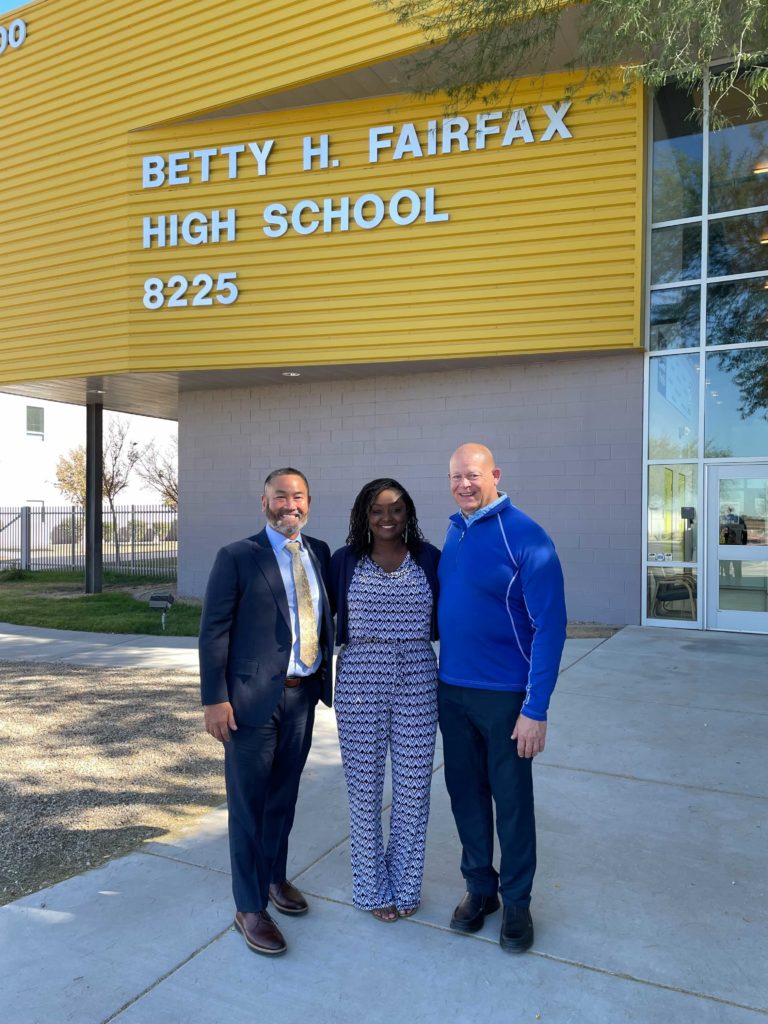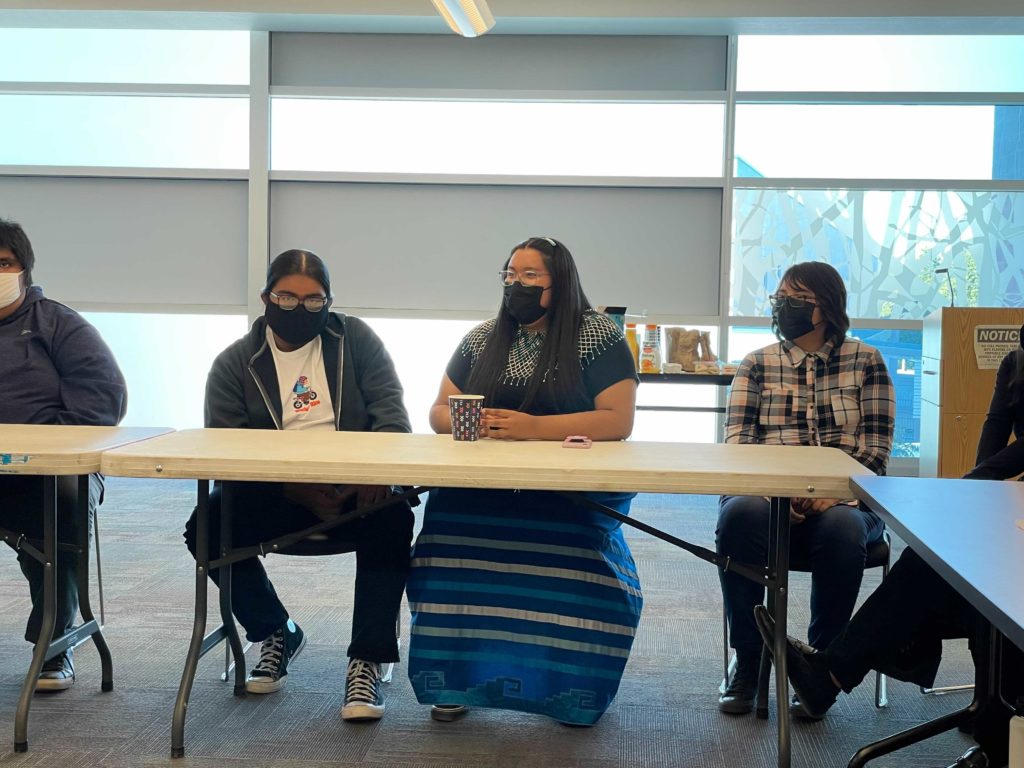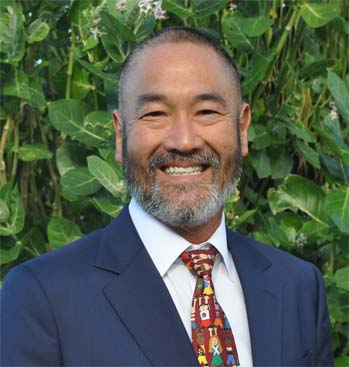When Ronn Nozoe, the CEO of NASSP, and Gregg Wieczorek, NASSP President, toured Betty H. Fairfax High School in Laveen, AZ, in mid-November, it was an apt location for a school visit during Native American Heritage Month. The school enrolls a number of Native students, many from the nearby Gila River Indian Community.
The school—and its Phoenix Union High School District—benefits from a strong support system for its approximately 200 Native American students, and its Native advisors and specialists who provide referral services, check students’ academic progress, monitor attendance and discipline, connect with parents and families, assist the school staff with understanding cultural issues, and promote cultural and academic enrichment events. The aim of the additional support, some of it funded by the federal Title VI Indian Education Program, is to help Native students stay in school, graduate, and succeed in college or career.

In this blog post, Nozoe reflects on the visit.
The word that sticks with me about the school is intentional. Everybody knows what they’re trying to accomplish there, which is to create this welcoming place for kids that celebrates their unique backgrounds and heritages. They don’t only celebrate and acknowledge their own, but also celebrate and acknowledge each other’s. As a result, the feeling of being welcome at this school is just profound.
And I’m not just talking about the Native American kids. Here’s a perfect example. They have a club for Latinx kids, and there’s a Black Student Union, and there’s a club for Native kids. They join because these are affinity groups. They’re comfortable because they get to hang out with peers who are like them. But what happens is that after those kids get secure in their own clubs, they join the other clubs to learn about the other cultures. That was exciting and heartwarming to see that kids go outside their comfort zone to learn new things.
The academic approach is equally impressive. They are an AVID (Advancement Via Individual Determination) school, which is a program designed to help students who haven’t historically gone to college prepare for higher education. But they are also an International Baccalaureate (IB) school, which is one of the most rigorous courses of study you can take. So, they are helping the AVID kids get up to par, but they are also partnering with the IB program to really accelerate their academic trajectory. This tells students, and especially kids of color, that they can have a bright future and choices in life.
There’s just no “can’t” in the school vocabulary. You get the sense that they’re going to help kids succeed, whatever it takes.

You get that sense from the students too, who were extremely well spoken and very poised and positive. When you talk to them, all of them carry some tough challenges, and they spoke about them freely. Forget about the pandemic; these kids are dealing with historically difficult challenges like poverty, alcoholism, abuse, and historical marginalization. But you get this idea that they view those challenges as making them stronger. There’s this sense of obligation that they must go farther in school and after, so they can give back to their community.
Federal funds make some of this possible, but this is also a very resourceful school. It’s about using federal funds and career and technical education funds, but it’s also about a partnership with the central office, and it’s about using money the Native American community generates from tribal lands and invests in supporting the schools. Here again, they clearly have this intentional plan of accelerating the trajectory of all kids at the school and then differentiating the supports for the ones who might be farthest away from achieving those trajectories. They leverage all the funds around this common purpose.
Word of the school’s success is spreading. They told us that their enrollment grew by 100 students this year, so kids are coming from other places to attend Betty H. Fairfax High. They are proud of their school culture, their reputation, their inclusiveness, and the welcoming feeling at the school as well as their academies and career structures that are also attracting kids. They are doing really good work there.

